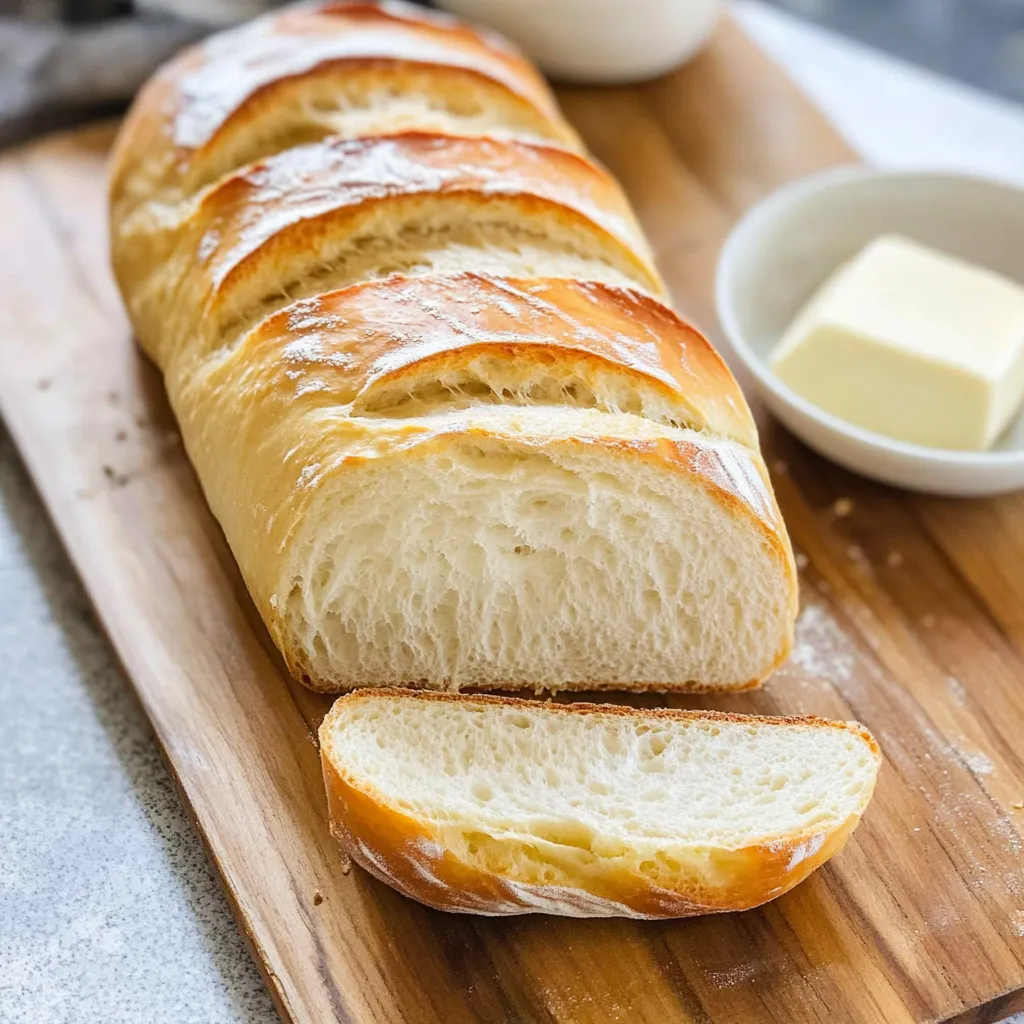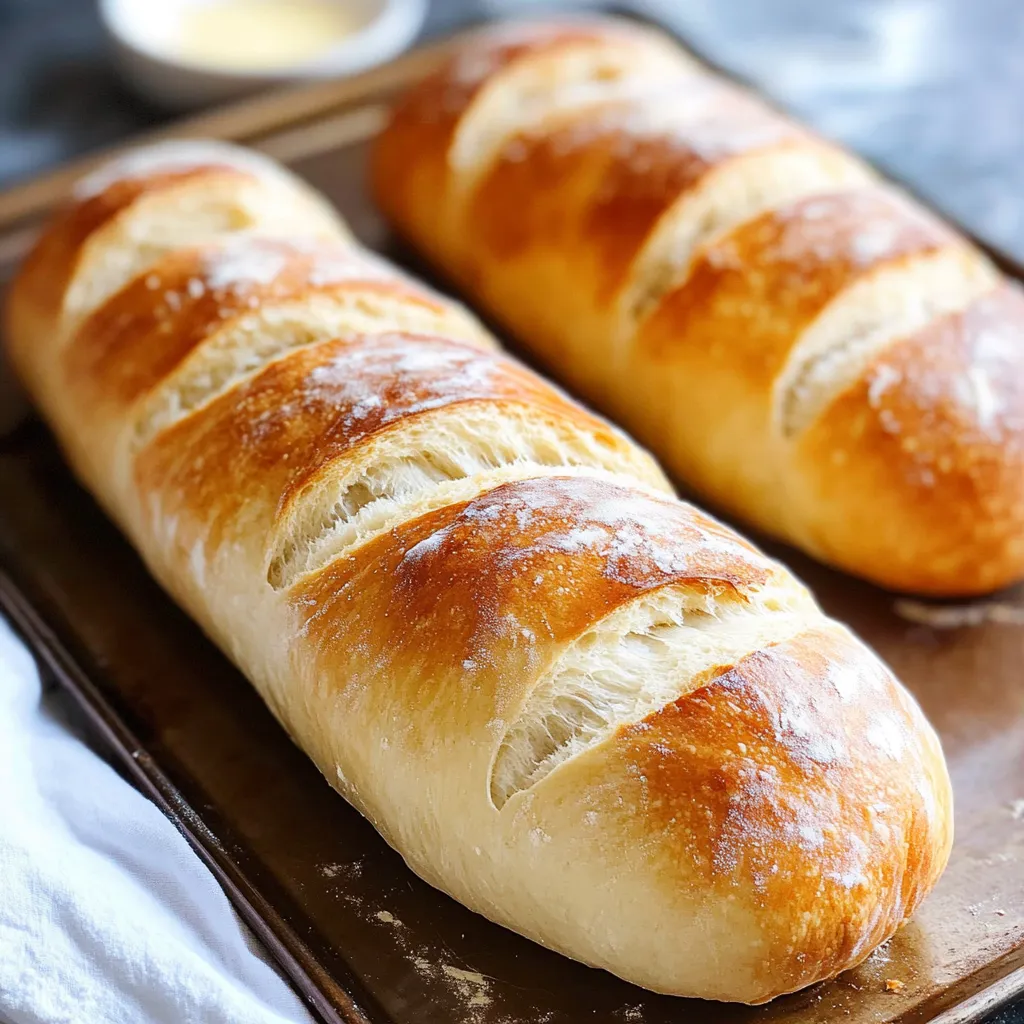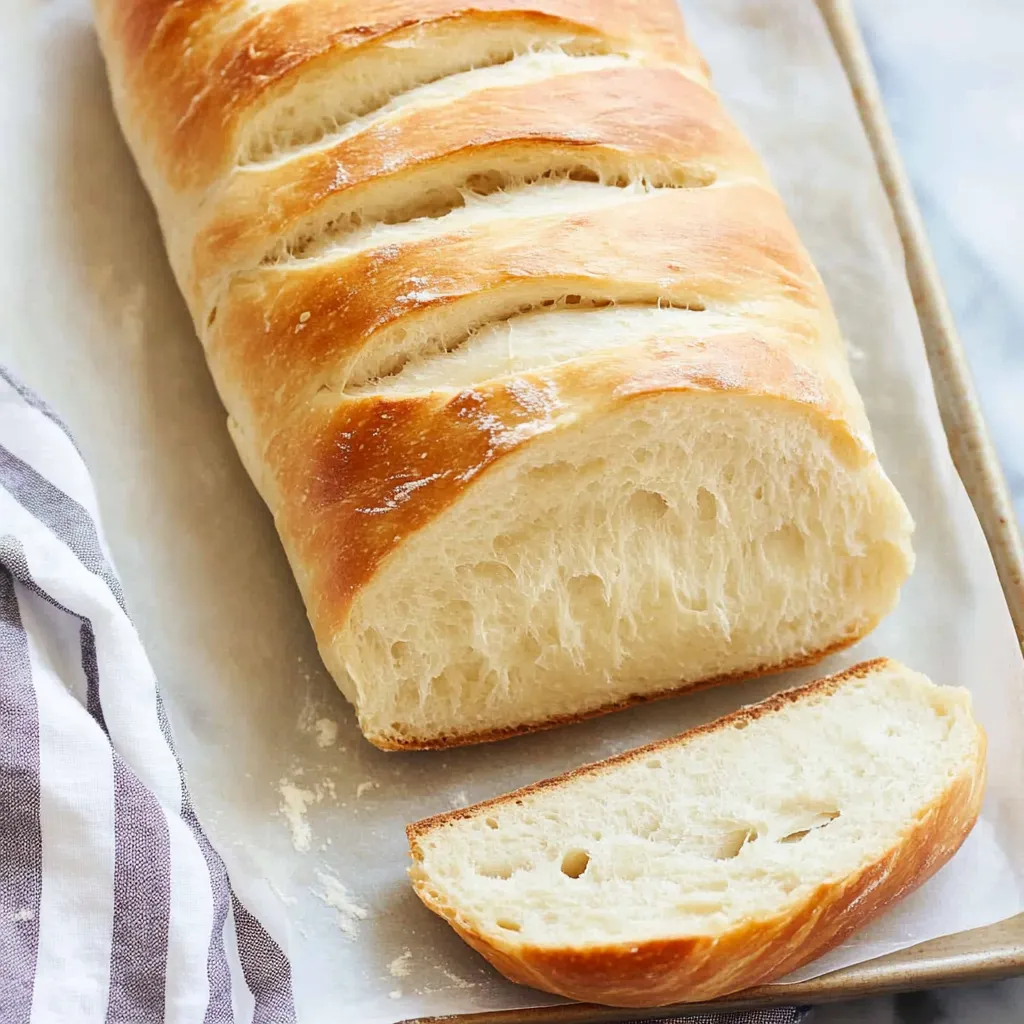 Pin
Pin
Nothing beats the smell of homemade French bread filling your home. This bread has a crunchy outer layer and soft, fluffy inside that makes any dinner extra special. I've spent many years tweaking this 90-minute technique in my kitchen, and I'm sure you'll get results that are just as good as what you'd find at your neighborhood bakery.
The first time I pulled this bread from the oven, my family crowded around, tearing off warm chunks and watching them steam. Seeing their happy faces reminded me that bread made at home has something magical that you just can't find in store-bought loaves.
Key Ingredients Breakdown
- Bread flour: Has more protein than regular flour, giving you that nice chewy feel and firm crust that makes French bread so good
- Active dry yeast: The key to making your dough rise, always go for new packets for the best results
- Warm water: Needs to be exactly 110°F to wake up the yeast without damaging it, ensuring proper bubbling
- Fine sea salt: Brings out all the flavors and helps control how the yeast works, creating that perfect texture
Making Your Beautiful Bread
- Waking The Yeast:
- Mix 110°F water with yeast and a tiny bit of sugar in a clear bowl. You'll soon see it turn into a bubbly, sweet-smelling mixture that shows your yeast is alive and ready.
- First Mix:
- Slowly add your flour to the yeast mixture, waiting until each scoop disappears before adding more. You'll start to see the dough come together, letting you know when it's ready for the next step.
- Working The Dough:
- Knead with steady movements, feeling the dough change from rough to silky under your hands. It'll become stretchier and less sticky as you work the gluten.
- Forming The Loaves:
- Cut your dough confidently, shaping each piece into a tight log. Create a smooth surface by rolling firmly, which helps it rise evenly and look professionally made.
- Finishing Up:
- Make clean cuts across the top to let the bread expand nicely while baking. A quick spray of water helps create the perfect environment for a crispy crust.

I can still picture my grandma tapping the bottom of every bread loaf, teaching me to listen for that special hollow sound. This simple check has worked every time for me and makes me feel connected to all the bread makers in my family before me.
Tasty Ways To Enjoy Your French Bread
Your fresh bread can be used in so many ways. Cut thick pieces for awesome sandwiches, dice it up for homemade croutons, or eat it alongside your favorite soup. Each way brings out something different about this versatile bread.
Customizing Your Bread
Try mixing in some herbs de Provence for flavor, or use part whole wheat flour for a healthier twist. You can shape the dough into round loaves instead of long ones, or make small dinner rolls that are perfect for family meals.
Storing Your Bread Right
Keep your bread in a paper bag on the counter for up to two days to maintain that perfect crust. If your bread gets a bit stale, just sprinkle it with water and warm it in a 350°F oven for 5-10 minutes to bring it back to life.

Over my years of making this bread, I've learned that taking your time really matters most. The wait for the dough to rise fully and holding back from cutting into hot bread always gives you better results. This recipe has grown into something more than just instructions. It's about honoring traditions, mastering techniques, and enjoying the simple pleasure of sharing bread you made yourself with the people you care about.
Recipe Q&A
- → Can I mix this French bread dough by hand instead?
- You bet! While using a stand mixer saves time, you can totally mix everything in a big bowl and then knead by hand on a floured counter for about 8-10 minutes until it feels smooth and stretchy.
- → How can I tell when my bread is completely done?
- Your bread is ready when you see a nice golden brown crust and it makes a hollow sound when you tap the bottom. If you've got a thermometer, the inside should reach around 190°F.
- → My bread didn't rise much. What went wrong?
- This usually happens when your water was too hot (it kills the yeast), your yeast was old, or you didn't wait long enough. Try using water around 105°F and make sure your yeast isn't expired.
- → Can I add other flavors to this French bread?
- Definitely! For a tasty herb version, mix in 1-2 tablespoons of dried rosemary, thyme or Italian seasonings. If you want cheesy bread, fold in 1 cup of shredded gruyère or parmesan after the first rise.
- → What's the best way to warm up day-old French bread?
- For that fresh-baked feel, lightly dampen the bread with water, wrap it in foil, and warm it at 300°F for 5-10 minutes. This brings back the crispy outside while keeping the middle soft.
